Overview
Our research focuses on experimental aerodynamics including unsteady, three-dimensional, and separated flows like those found on flapping wings, wind/water turbines, and rotorcraft. The project descriptions below give a brief overview of some of the work we did at the University of Maryland. As the lab transitions to UCLA, we are continuing to work on several of the same themes, with current work adding a project to study baseball aerodynamics as well as prepping for a new series of gust encounter experiments.
Lift production in separated flows
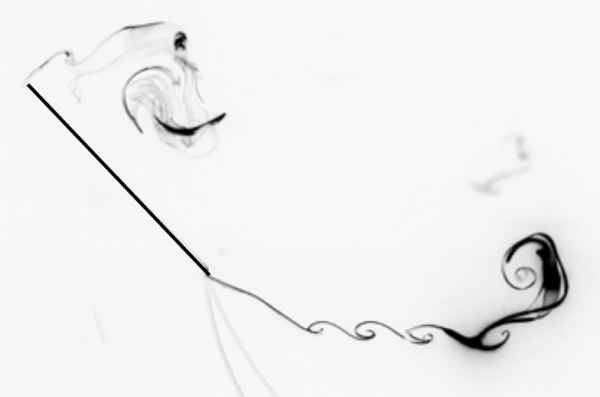
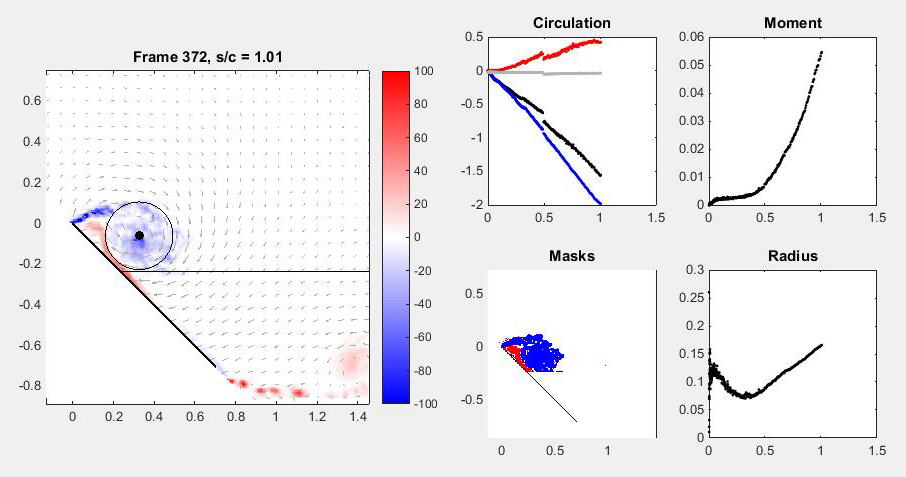
Current efforts to understand how and why lift and drag are produced on an insect-like flapping wing make use of many different simplified models of the wing stroke, one of which is a rotating wing. By studying the structure of the flow field using flow visualization, measuring the forces produced using a force balance, and measuring the velocity fields using PIV, we are working to understand which flow structures are responsible for force production and over what time scales these forces are produced. With this understanding, we can begin investigating different wing kinematics, degrees of wing flexibility, flow control methods to achieve a desirable force history, and new ways to model and predict the resulting forces.
This research is sponsored by the National Science Foundation (NSF) and the U.S. Air Force and the U.S. Army as a part of the Collaborative Technology Alliance (CTA) for Micro Autonomous Systems & Technology (MAST) Center on Microsystem Mechanics .
Reverse flow aerodynamics

Reverse flow occurs when the flow travels from the geometric trailing edge (typically sharp) of an airfoil towards the geometric leading edge (typically blunt). Reverse flow affects the retreating rotor blade of high advance ratio rotorcraft as well as tidal turbines with fixed pitch rotors. This work aims to characterize the unsteady reverse flow regimes and evaluate the performance of airfoils with varied thicknesses, camber, and trailing edge shapes. The current investigation has focused on understanding the unsteady airloads imposed on both static and dynamically pitching airfoils in reverse flow using time-resolved PIV and surface-mounted unsteady pressure transducers. The image on the left shows an instantaneous velocity field measurement of vortex shedding from a static NACA 0012 in reverse flow and the resulting induced flow near the blade's surface. Ongoing work is moving towards a new model of reverse flow dynamic stall and assessing how reverse flow in two dimensions (i.e., in a wind tunnel) compares to that in three dimensions (i.e., on a rotor).
This research represents one task of the University of Maryland Vertical Lift Research Centers of Excellence (VLRCOE) program, sponsored by the U.S. Army, the U.S. Navy, and NASA.
Extreme gust encounters
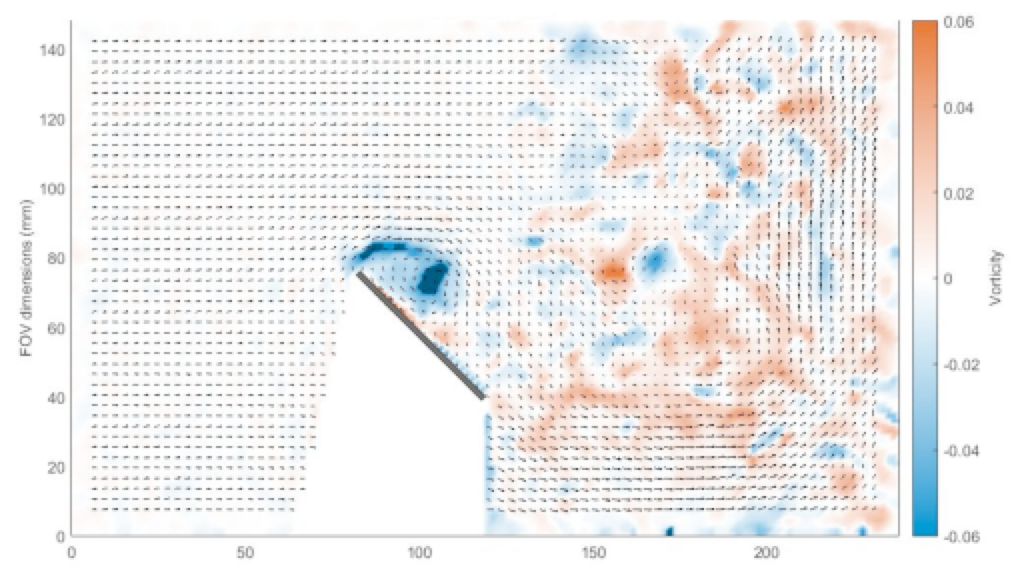
This project explores the physics of large flowfield disturbances by combining experimental aerodynamics and analytical flow theory to predict formerly uncharacterized force transients on a wing encountering a large-amplitude wind gust. Unique experimental capabilities have been developed in the lab to allow us to measure the unsteady velocity field as a wing interacts with a large well-characterized flow disturbance (i.e., gust). Through these experiments, we are exploring the limitations of existing aerodynamic models in order to place useful boundaries on the overall concept of a “gust,” and are working towards new models of unsteady airloads and new fast-response flow control techniques to enable more robust flight control in unsteady environments.
Past Projects
Wind turbine wake recovery
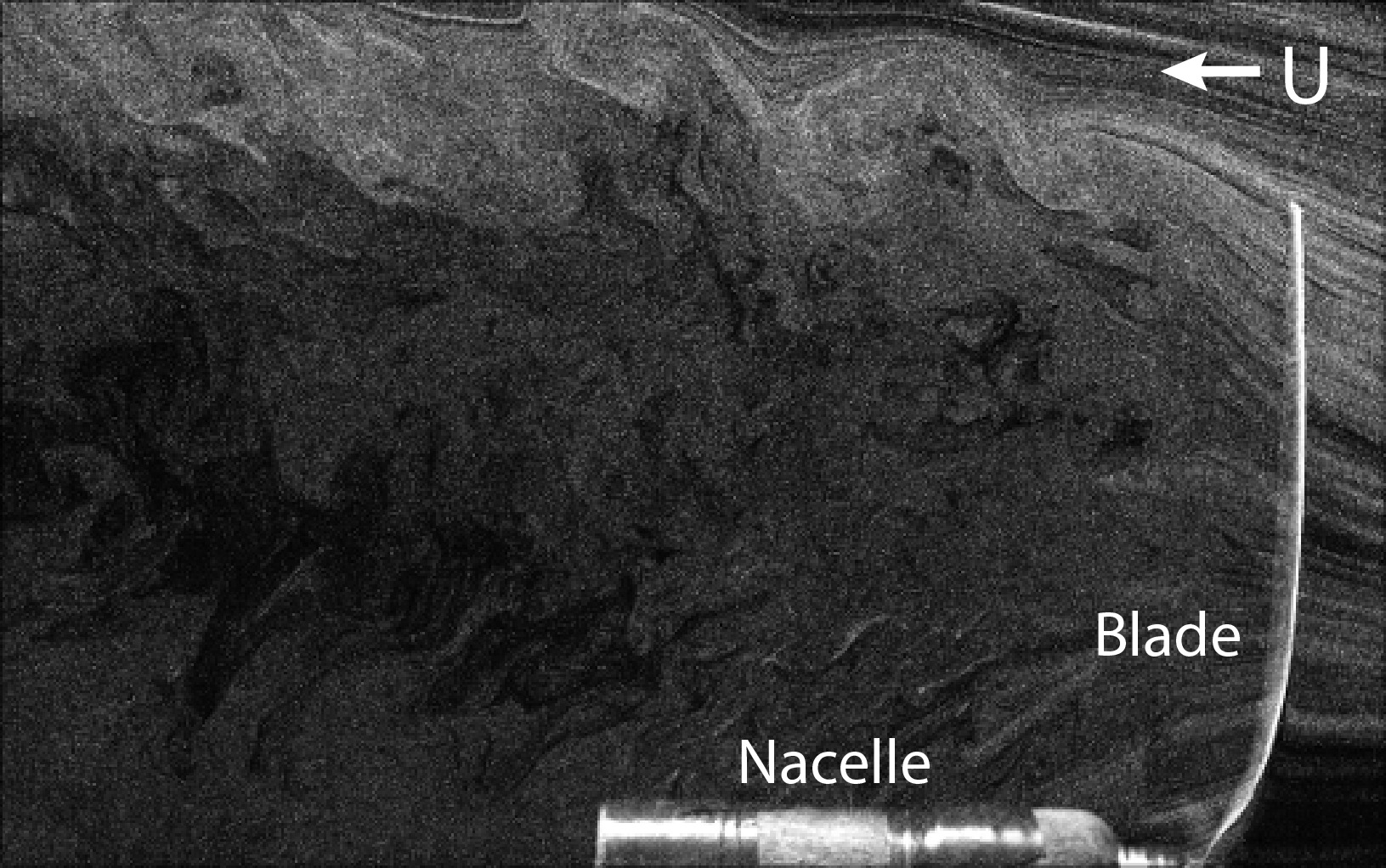
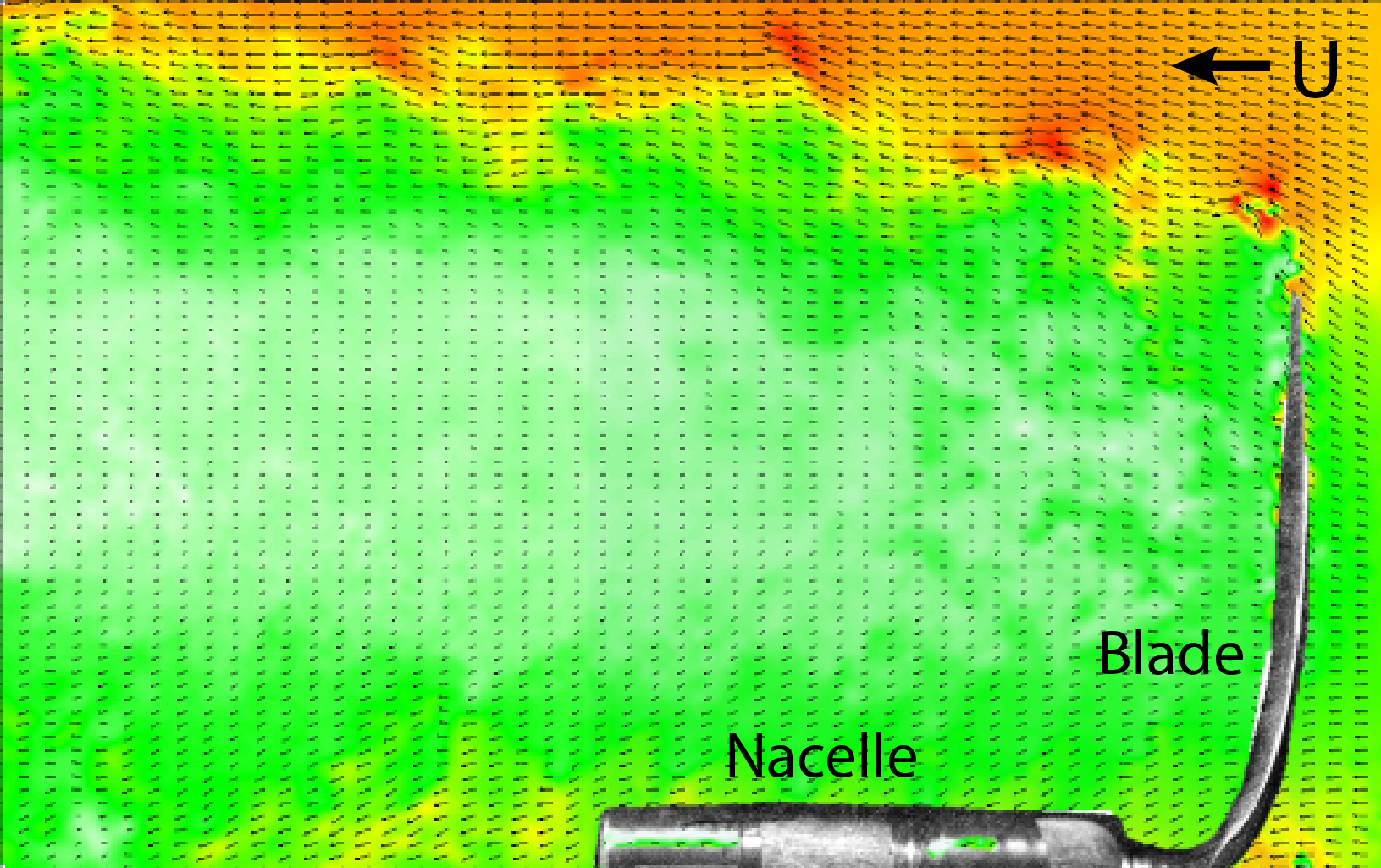
In recent years there has been a lot of interest in developing systems that yield clean and renewable energy. Offshore horizontal axis wind turbine farms have been used to supply renewable energy in Europe and will be installed off the shores of United States in the near future. One of the problems that arise in an offshore wind turbine farm is the interaction between the wind turbines and their wakes. A wind turbine wake decreases the efficiency of the wind turbines down stream and can also lead to unsteady structural loads. The dominant structures in the wind turbine wake are large helical vortices that are shed off of the tips and are propagated downstream. This research project focused on developing blade-mounted devices that would speed up the dissipation of the turbine’s wake. Three configurations of blade-mounted devices were tested in a subsonic wind tunnel. Particle image velocimetry and smoke flow visualization were used to observe the dissipation of the wake. In-depth analysis of the PIV data demonstrated the effect of the blade-mounted devices on the strength of tip vortices and the recovery of the wake, while power measurements provided insight into the effect of tip treatments on the turbine’s efficiency.
This research was sponsored by the Maryland Higher Education Commission and the Maryland Energy Administration user the Maryland Offshore Wing Energy Research Challenge.
Rotorcraft Brownout
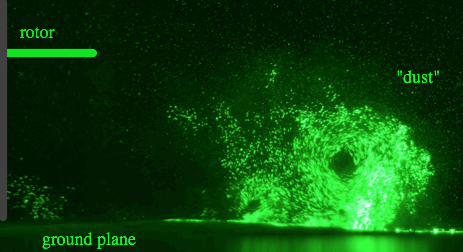
Brownout occurs when a helicopter attempts to land on a dusty or sandy surface. At the helicopter approaches the ground, the rotor wash kicks up a large dust cloud, decreasing the pilot's visibility. Brownout is a coupled aerodynamics and sediment transport problem that occurs at large scales can is thus difficult to study and model. This project focused on the effects of scaling such a problem from a full-scale helicopter to a laboratory-scale model. Multiple types of flow visualization, particle image velocimetry (PIV), and particle tracking velocimetry (PTV) were used to qualitatively and quantitatively study the rotor wake and how the structure and strength of this wake affects particle uplift and transport.
This research was sponsored by the U.S. Air Force Office of Scientific Research (AFOSR) as part of a Multidisciplinary University research Initiative (MURI).
Sediment transport in the wake of a marine hydrokinetic turbine
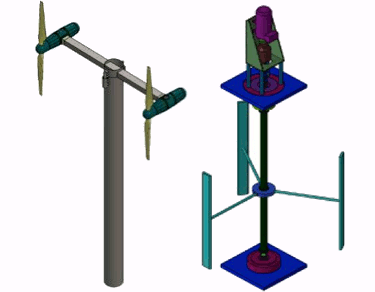
Freestream flows contain a significant amount of renewable energy, but installing turbines in these locations may alter the local ecosystem due to the mobilization and transport of the sediment on the seafloor. This project aimed to better understand how the vortex-dominated wake of a marine hydrokinetic turbine mobilizes sediment on the sea floor, and how this might affect the local environment.
This research was supported by an NSF EAGER grant in collaboration with the Department of Mechanical Engineering.
 Donec pulvinar ullamcorper metus
Donec pulvinar ullamcorper metus
